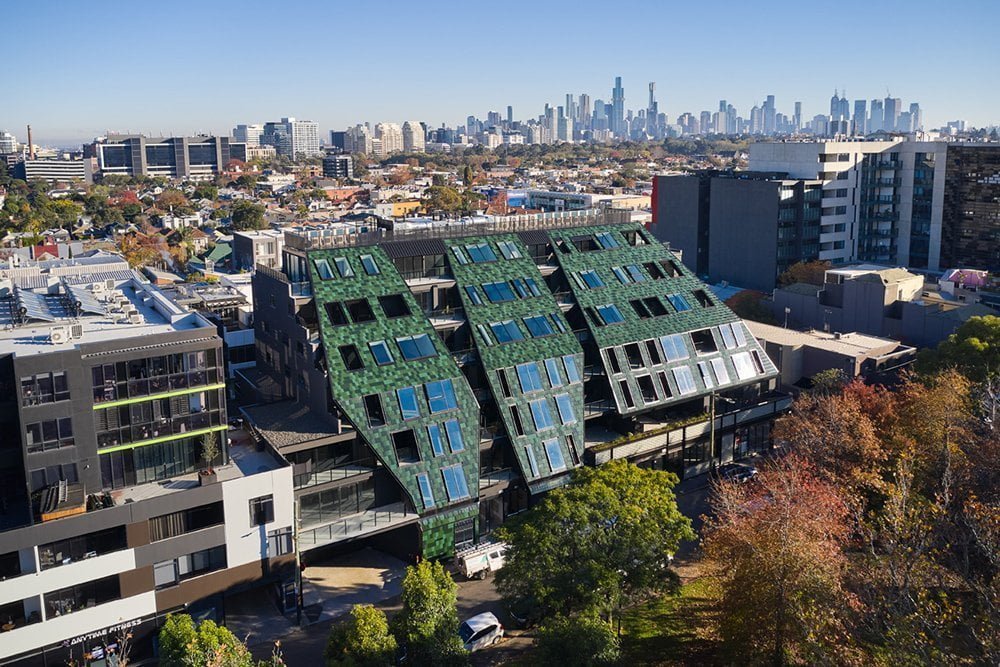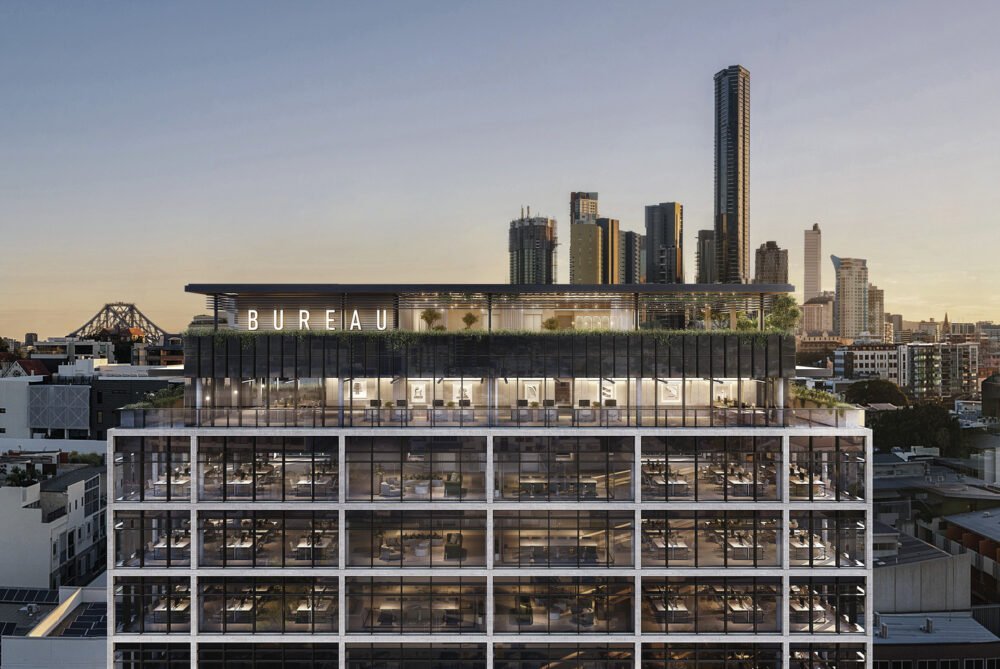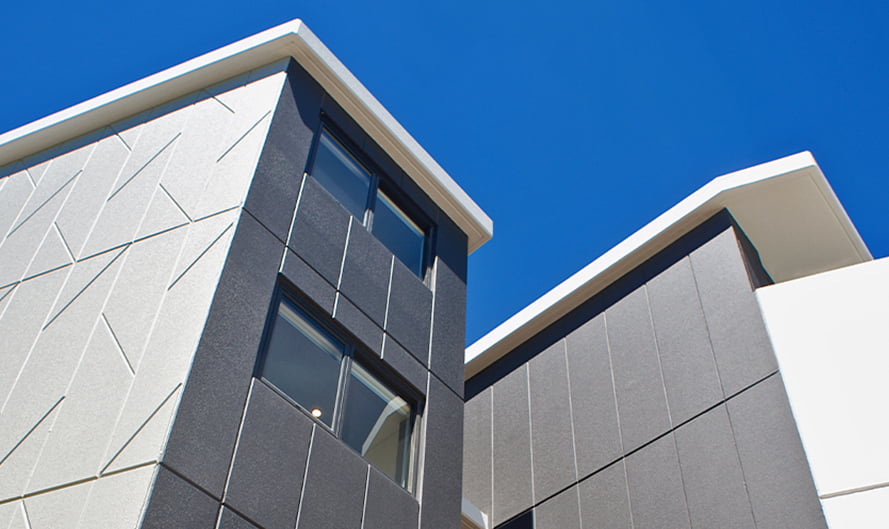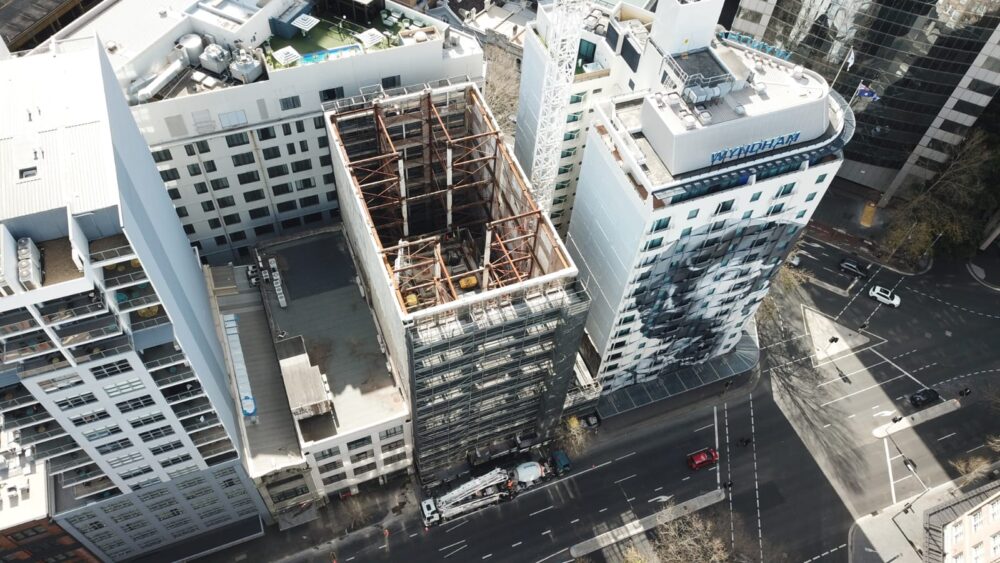
In partnership with property developer Little Projects and builder Cobild, Plus Architecture has delivered one of Australia’s most cutting-edge designs for a residential project – leveraging computational and engineering technology to realise the vision for a complex angular tiled façade.
Located at 17-22 Grattan Street, the new-age ‘Viridi’ apartment building is a new visual landmark in the heart of Prahran, Melbourne, characterised by a wide-pitched, ‘hill-like’ roof. To reflect and complement the adjacent Grattan Gardens, the facade is clad in a mosaic-like tessellation of over 15,000 terracotta roof tiles, glazed in shades of lush green.
Honouring local heritage hotels and accurately mimicking the colours of the gardens, the tile design was brought to life with the help of a custom computer script written by the project architects to map the colour ratios and pattern sequences via a 3D model. Not seen before on an Australian apartment building of this scale, the raked nature of the tiled facade responded to council requirements not to overshadow the gardens or pedestrian pathways.
Plus Architecture Director Ian Briggs said the strict requirements of the site were harnessed as an opportunity, rather than a restriction, inspiring an innovative response that pushes the boundaries of the use of material, colour and shape.
“Initially, using the tiles seemed an obvious choice as a lightweight flexible solution for what seems like basically a big roof, but as we explored this further it became apparent that we needed to develop new design and construction technology in order to deliver a design that’s unique to Australia,” Briggs said.
“Despite extensive experimentation, prototyping and quality testing, executed over several stages in close collaboration with our project partners, we were remarkably able to deliver the Viridi apartments within the original project budget, which was set out before we envisioned the ambitious roof design.
“It’s really exciting to be able to showcase a building that draws on methodologies that weren’t available to us before, and expresses colour so confidently to our clients and the community.”
In a process akin to painting by numbers, Plus Architecture designed the placement and sequencing of the coloured tiles using the 3D model, with the program further helping to predict how the colours would appear in changing light conditions and producing an accurate map that was expertly realised by tilers TLG Roofing Melbourne.
The three shades of forest green tiles were directly selected from leaves sampled in the park with each of the custom terracotta tiles hand-crafted in Spain – a process made possible through close collaboration with Cobild and constant adaptation to the ever-changing challenges of the pandemic to deliver the dynamic roof design as intended.
An innovative project beyond its aesthetic, Plus Architecture further designed a facade system in partnership with Cobild and expert façade engineers Inhabit, with the complex roof shape requiring the development of new technology and waterproofing approaches specifically for the project.
The project’s custom-built blue steel truss system, developed by Bolt Blue Constructions and Dynamic Steel Frame, ensured adequate stability for both the thousands of tiles and large windows – some reaching over 500kg – while allowing for immersive views of the skyline. Compared to what a standard vertical wall would allow, the angled roof form also allows for increased natural light within the generously-sized apartments.
In line with the latest environmental standards, Viridi is accredited with a 7-star apartment ESD rating and features passively sustainable elements embedded within the design, from the double-glazed windows to the thermal insulation that results from the façade itself and houses FP1.4 compliance waterproofing.














